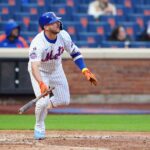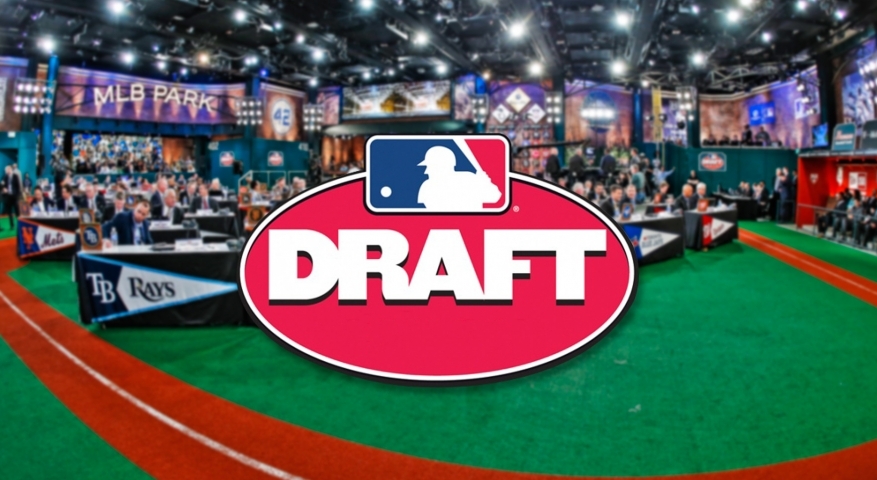
The MLB Amateur Player Draft offers more intrigue than any of the other four “major” US sports. It also might be the least watchable. The reasons for both stem from the nature of the draft itself. It’s also the reason you should tune in today even if you cannot name a single prospect or know a thing about the intricacies of the draft (I cannot lie—it has quote a few).
I hope the following 10 draft notes both entice you to follow the “Rule IV” draft—the official name for Major League Baseball’s Amateur Player Draft—as well as give you an idea of what to expect later on today at 7 p.m. on MLB Network and throughout the week.
The 2018 draft contains a veritable boatload of talent which means teams picking in the later stages of the first round and teams drafting their second player in round two will have at least one shot at a cornerstone player early on. Which means that…
1. Early in the draft, expect teams to draft the Best Player Available. While this is common sense, I still see fans say things like “The Giants won’t draft Joey Bart. They have Buster Posey”. Joey Bart, as you might be able to deduce, plays catcher. Many also consider him as close to a consensus No. 2 (behind Auburn pitcher Casey Mize) as there is at this point.
If San Francisco sees Bart as the #2 player on their board and they feel they can sign him for the right dollar amount (more on that later), guess what—they’re drafting Joey Bart. This philosophy fades after the first couple rounds when teams start loading up at the positions they need in the system the most.
You might see this when a pitching-starved farm system rattles off 10 pitchers in 10 straight rounds from, say, rounds 5-14. What does this mean for the Mets? While we might all hope the Mets get a cornerstone catcher or third baseman, I guarantee you that they will take the player they have atop their board (again, assuming they think they can sign him for the right amount).
So, while you might not think of power righties as the biggest need right now, I all but guarantee that if Brady Singer (or, *prays to Jobu* Casey Mize somehow) falls to No. 6 and the Mets have him atop their big board, they will select Singer or Mize. This assumes, of course, that…
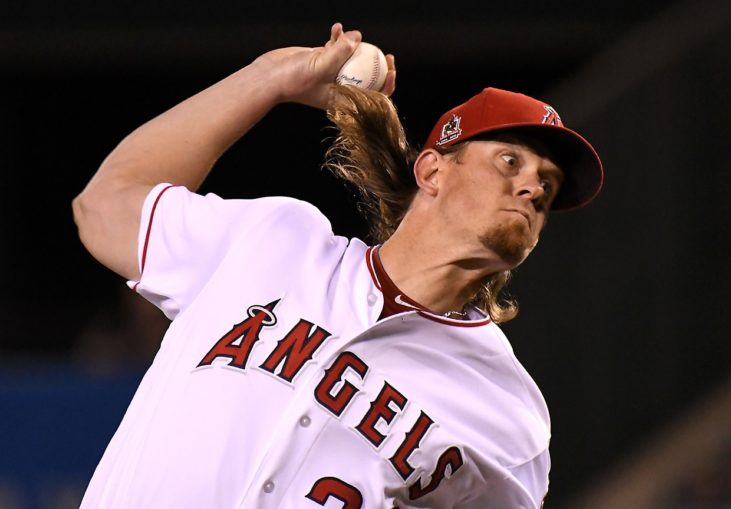
2. The teams considers the player easy enough to sign and at a proper dollar amount. Starting in 2012, MLB collectively bargained with the owners that there be a soft (technically soft, but still kinda firm. It’s a firm-soft) cap on bonus spending.
The thought was that rich teams were bullying poor teams and getting better players even if they had a lower draft pick. You saw evidence of that when Jered Weaver slid all the way to pick #12 in 2004 despite many thinking he was the best talent in the draft. The 11 teams ahead of them, Mets included, were of the smaller market/spend less mold and less likely to dish out the millions Weaver wanted. Anaheim—yes they were Anaheim back then—had no issue with the price tag and got a better player than they would have been able to pay underslot.
If a team goes over their pool (by 5% or less), they’re hit with a tax. If they go way over their pool (5-10%), they get taxed more and lose their first round pick the following year. If they go WAY way over (over 15%), they might be forced to surrender the following two year’s draft picks along with that luxury tax. Those draft picks would go to smaller revenue teams in Major League Baseball’s futile effort for.
3. “Competitive Balance”. You might notice that after the first and second rounds, a handful of teams get extra selections called “Competitive Balance” picks. Major League Baseball assigns these picks to “smaller market” and/or “low revenue” teams to try to make those clubs more competitive.
Teams like the Yankees and the Dodgers never get these picks because their revenues and market are never low or small enough to qualify. However, the Padres, despite playing in a city of a million people and near neighbors to one of the largest media markets in the world in Southern California, have the third competitive balance pick.
These competitive balance picks do not always make sense, especially when you start considering the financials other than tickets. I think we might have to table that discussion for another day, though. Rounding out that first competitive balance sub-round after round one come the Pirates and Orioles before the Padres and the D-Backs, Royals, Indians, Rockies and Cards after. Some of those make sense. Others not so much. The really cool thing about CB picks is that you can trade them—something that you cannot do with any other pick in the draft and something I think should change because
4. Trading draft picks would make the MLB draft exponentially more interesting. And, despite the logistical headache that would accompany it, it would allow for more “competitive balance” than any statistically cherry-picked additional selections in the first 100 picks could. A team, instead of getting caught up over minor league players’ medicals and fussing over cash could just float a draft pick or two and get a deadline deal done. Major League Baseball is on the right track. They just need to make all of the picks open to trade and they absolutely need to finally implement.
5. A world wide draft. Alright, if trading draft picks is a logistical headache, a world wide draft would inflict a logistical nightmare. MLB would have to address the age difference between domestic and international players (you can sign as an international free agent at age 16 but cannot be drafted until after your senior year in high school. And last I checked most high school seniors are older than that) but baseball has a lot of smart people and this is a great
way to create better balance.
Again, there are more organic ways for “competitive balance” than MLB currently employs—even after draft pool caps and international signing bonus caps. Oh, by the way, you can trade international pool money too. Again, topic for another day. Getting back to the point, though, how cool would it be to try to figure out if a 22-year-old Friday night starter from the SEC is going to be a better pick than a slick-fielding Dominican teenager? You might not buy this, but scouts and front offices already do this sort of thing because…
6. Every team has their own evaluation process and every major league team has their own big board. Every team assess risk and reward and no two teams do so the same way. Unless, of course, you employ the Cardinal way and just steal information.
While we can all read Jonathan Mayo, Keith Law, John Sickels and Jim Callis and have a sense on what the consensus top 10, 20, 50, or 500 (okay less likely) players are, a team might disagree with you. They probably do. And they are probably right. They have hundreds of scouts, statisticians, executives and consultants evaluating these players, assessing risk, talking to players and their families to figure out signability and character, and ultimately assigning a ranking or a value to a player. They have more information than we do. And even with all of that information…
7. Only two out of every three first round draft picks ever play a game in the big leagues. Round two? Just under half. Rounds 3-5? About one in three. Rounds 6-10? One in five. Even after all of that scouting and analysis, the chance of your team’s prized 1st round draft pick even becoming as much as a bench player is roughly the same odds of you getting food poisoning from Taco Bell. This is important to keep in mind because…
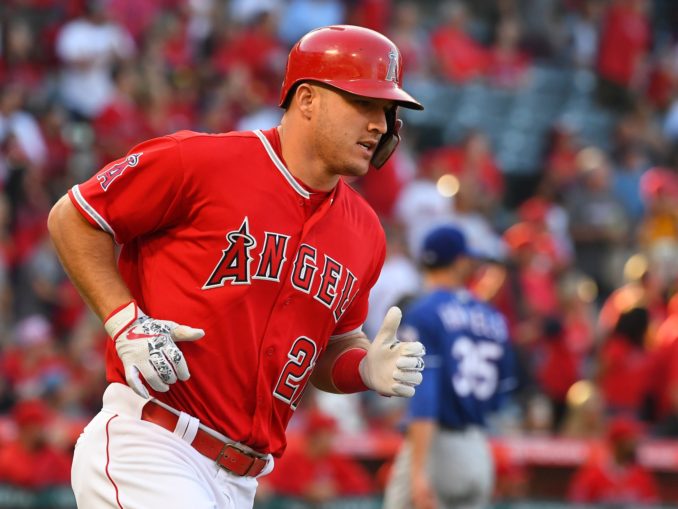
8. Fans love to hindsight the MLB draft. I mean who has yet to look back at the 2009 draft and wondered how Mike Trout failed to go No. 1 overall? And god forbid your team passed on him for another player or, for example, signed a combustible reliever and lost the draft pick they most definitely without a doubt would have used to draft Mike Trout? Watch out.
Look, very rarely does the most talented player in a given year go No. 1 overall. Griffey, Chipper, A-Rod, yea. But sometimes you draft Mark Appel and he never even makes the big leagues. Sometimes you draft Matt Bush and they go to jail, change positions, and become a reclamation project. Most of the time No. 1 overall turns out to be ‘merely’ very good and not an all-time great (hello Justin Upton, David Price, Adrían González, and Pat Burrell to name a few over the past 20 years).
There is so much variance and so many moving parts to MLB draft prospects that odds, like everything else in baseball, very much become a part of the process. Which is why teams tend to stick to a strategy and trust their development system. That means, by extension, that…
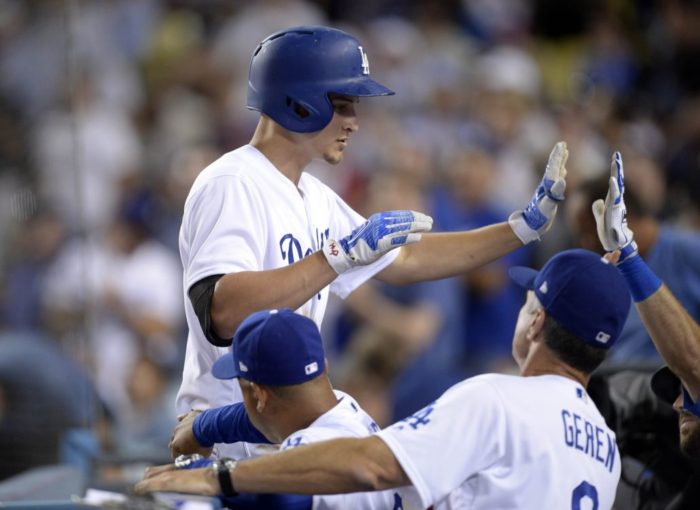
9. Not all farm systems are created equal. Sandy Alderson’s sharpest critics point to the 2012 draft where the Mets bypassed a tall, talented shortstop by the name of Corey Seager for a smaller, more athletic one by the name of Gavin Cecchini. I need not remind you how those two careers have progressed since then.
While the Mets have done a very good job getting their first round draft picks to the majors under Sandy Alderson, the Dodgers have savant-like abilities developing hitters both through their minor league system and in the majors. Corey Seager might not become Corey Seager in another system.
Conversely, Touki Toussaint in the Mets system (one that has done exceedingly well developing hard-throwing pitchers) might be Luis Severino 2.0 by now. Instead, the Mets passed on him, the Diamondbacks got him, and he has only now again become a top-100 prospect after being traded to the Braves.
Drafting the right players is only one part of the equation. Keeping those players healthy, keeping them out of trouble, and, most importantly, developing them so that they hit their ceilings by the time they’re at “the show” is a very large and oft-overlooked part of the equation. I want to round this all back to the Mets, since this is a Mets blog after all, and remind folks that…
10. Whichever player the Mets take today, the process of getting that player to the big leagues takes time. It takes energy. It takes hundreds of coaches, doctors, therapists, hosts, specialists, consultants and analysts all driving that player down on a long and arduous road to the bigs. You know what they say…it takes a village to, uh, optimize a player’s natural ability so that they become star Major League Baseball players. Just keep in mind that practically no draftee could play effectively in the bigs today.
Over the past few weeks I have read two theories about the Mets “direction” with the No. 6 overall pick: That they prefer a college player who will move quickly or they prefer a high school athlete they can Carlos Correa into more talent later. While, if you recall point one, teams draft the best player available, an easy tie-breaker of similarly ranked players could simply be time to the bigs.
If the Mets see themselves competing over the next couple of years, a player who might only take a season and a half to get to the show might take precedence over a raw high school talent who they see as a five year project. If they like the depth in the draft and see many paths to their 2nd round pick needing more money to sign, they might throw that theory out the window and sign a lower-ranked high schooler to a below-slot deal.
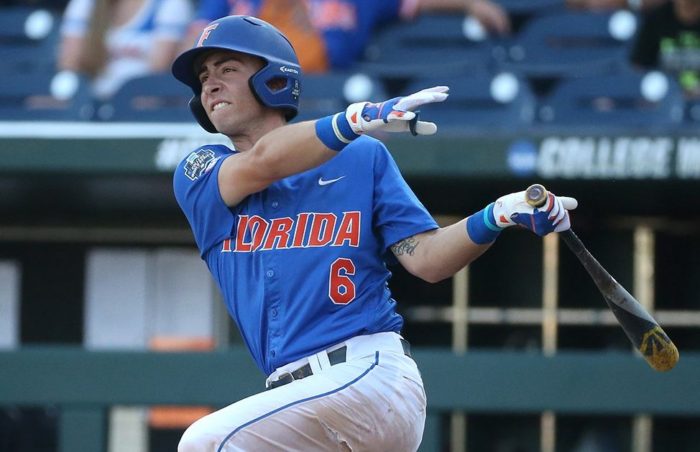
Jonathan India, Univ of Florida
The Mets have been tied to a number of college players, most notably perhaps Jonathan India, a third baseman from Florida and Michael Mayer favorite who is such a glove wizard that many folks believe he could easily handle shortstop down the road.
However, if Brady Singer or Casey Mize—the two best college arms in the draft—fall to New York, that is likely who they take. If they want to “Carlos Correa” the No. 6 pick and buy some lottery tickets later, perhaps Jarred Kelenic, a high school outfielder from Wisconsin, becomes the guy.
Most teams are tightlipped about their selections and this draft is particularly ambiguous after Mize. I hope you all tune in tonight so you can say that you were there the moment the Mets drafted the next big thing. And I really hope they get this pick right. Because at one point Mike Trout was just a speedy high school outfielder from New Jersey who a bunch of Angels fans had to Google.






